Nature: The splitting of mitochondria has important strategies and purposes
- Why Botulinum Toxin Reigns as One of the Deadliest Poisons?
- FDA Approves Pfizer’s One-Time Gene Therapy for Hemophilia B: $3.5 Million per Dose
- Aspirin: Study Finds Greater Benefits for These Colorectal Cancer Patients
- Cancer Can Occur Without Genetic Mutations?
- Statins Lower Blood Lipids: How Long is a Course?
- Warning: Smartwatch Blood Sugar Measurement Deemed Dangerous
Nature: The splitting of mitochondria has important strategies and purposes
Nature: The splitting of mitochondria has important strategies and purposes. During the French Revolution, Lavoisier, the father of modern chemistry, unfortunately ended his life on the guillotine. The famous scientist discovered the key process of biological energy production just before the doom, which he called respiration. .
He believes that breathing is “the slow burning of carbon and hydrogen, similar to the self-consumption of a lamp or a lighted candle. From this point of view, breathing animals are veritable flammable substances, they burn and consume themselves”, This is an epoch-making viewpoint. But how is this “burning” controlled in the cell?

Figure 1. The Lavoisiers Photo source: Internet
People have been exploring hard until 150 years after the Lavoisier era, an organelle called mitochondria was finally found to be the place where “burning” took place.
Nowadays, the study of mitochondria has become a hot field of cell biology, and it is known as the “power factory” of cells. In a sense, breathing is the same as burning, with the collateral damage of “wax torch turns into ashes and tears begin to dry”. Active mitochondria will gradually “wear out” during breathing and become defective, and even cause mutations in the genome of the mitochondria.
Previous studies have found that cell removal and degradation of damaged mitochondria rely on mitochondrial autophagy (mitophagy) to maintain cell homeostasis. Once the dysfunction of mitochondrial autophagy occurs, it may cause defects in some long-lived cells (such as neurons), induce Parkinson’s and other neurodegenerative diseases.
In different environments, mitochondria seem to have different considerations for their own survival methods. Recently, Tatjana Kleele of the Federal Institute of Lausanne, Switzerland, made new discoveries about mitochondria [1].
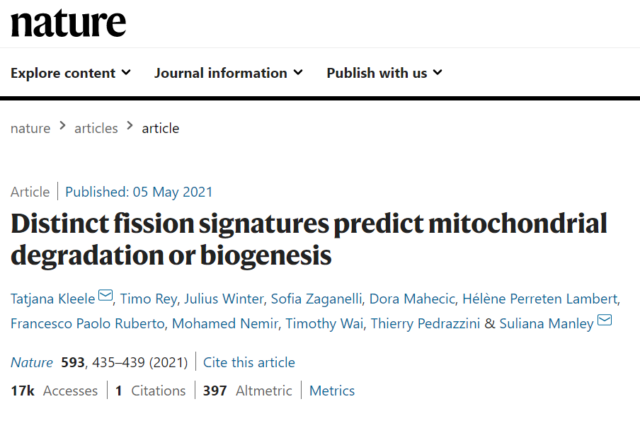
How mitochondria divide
Through careful observation of mitochondrial division, they discovered two spatially different types of division, namely midzone division and peripheral division.
The middle division occurs in the central part of the mitochondria, while the peripheral division occurs in the areas near the ends of the mitochondria (Figure 2). What’s interesting is that these two divisions of mitochondria will bring two completely different “destinies” to mitochondria. Mitochondria seem to be playing a “big chess” to maintain the homeostasis of cells and even the entire life body through division.
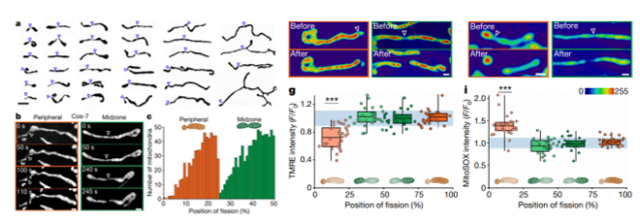
Figure 2. Mitochondrial division mode and unique physiological characteristics
Image source: Nature [1]
Peripheral division
They found through research that before the mitochondria divide in the periphery, there will be an increase in Ca2+ and reactive oxygen free radicals (ROS), and a decrease in membrane potential and pH, suggesting physiological and biochemical characteristics such as oxidative damage and cell stress.
After the mitochondria divide at the outer periphery, daughter mitochondria of different sizes are produced. The smaller daughter mitochondria do not contain replicating DNA (mtDNA). This part of the daughter mitochondria lacking mtDNA is eventually swallowed by autophagosomes, that is, mitochondrial autophagy. The daughter mitochondria are preserved.
They designed an experiment to irradiate the cells with ultraviolet (UV), and found that the probability of cell mitochondria division increased greatly after UV irradiation (Figure 3). This indicates that mitochondria divide through the periphery under the unfavorable environment of cell adversity stress to achieve the strategy of “losing the car to protect the handsome” and stopping loss in time.
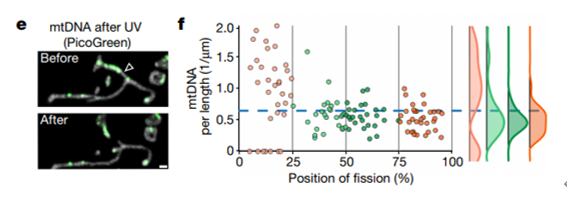
Figure 3. Changes in the division of mitochondria before and after UV irradiation
Image source: Nature [1]
Split in the middle
Interestingly, the study by Tatjana Kleele et al. also found that adversity stress is not the only cause of mitochondrial division. It also occurs in the active phase of cell growth and cell division, and the main intermediate division is carried out at this time.
Cells in the proliferation phase need new mitochondria and often undergo fission in the middle zone. Compared with the danger of “life and death” faced by peripherally dividing mitochondria, the mitochondria that are about to split in the middle zone behave particularly smoothly.
There is not much difference in the physiological state of mitochondria before and after the division of the middle zone, which indicates that the division of the middle zone serves for cell proliferation or higher energy demand. For example, more mitochondria in the cardiomyocytes undergo middle zone division. In short, the different division patterns of mitochondria predict the different fates of daughter mitochondria (Figure 4).
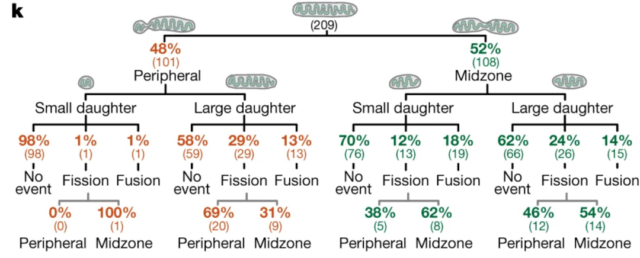
Figure 4. The fate of daughter mitochondria after mitochondria split through the peripheral and intermediate regions
Image source: Nature [1]
Accumulation of DRPI protein
In the study of the molecular mechanism of the two split modes, they found that both the mid-region split and the peripheral split were related to the accumulation of DRPI protein. DRPI can be activated by different molecular mechanisms to further drive the division of mammalian mitochondria, and the protein factors involved in different division methods are also different.
The key organelle in contact with mitochondrial outer peripheral division is the lysosome, and this process is regulated by the outer mitochondrial membrane protein FIS1. Lysosomes are a class of degradable organelles, which are closely related to mitochondrial autophagy. The division of the intermediate zone is related to the contact of the endoplasmic reticulum and is closely related to specific actin filaments (Figure 5).
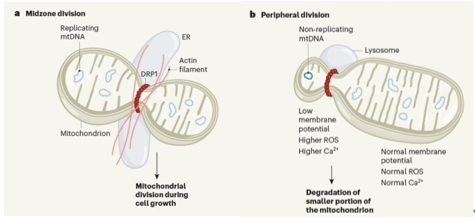
Figure 5. Schematic diagram of the middle (left) and peripheral (right) divisions of mitochondria
Image source: Nature [1]
Tatjana Kleele et al. conducted a fine spatiotemporal analysis of mitochondria and found that before the occurrence of peripheral division, ROS and Ca2+ gradients were formed on both sides of the division site, and this gradient actually exists even when the inner mitochondrial membrane does not divide independently. This phenomenon can appear on a single cristae of the mitochondria. They speculated that the peripheral division can accurately locate the division site through this gradient.
Sum up:
The two mitochondrial divisions with distinct mechanisms and functions found in this article have important physiological and pathological significance.
Previous studies believe that the excessive frequency of mitochondrial division is a signal sign of a variety of diseases, and the inhibition of division by drugs is a potential treatment method.
However, things may not be that simple. The research model in this article shows that if only one way of mitochondrial division is dysregulated under pathological conditions, treatments that inhibit mitochondrial division will further destroy cell homeostasis.
Therefore, only by understanding the “big wisdom” of mitochondria can we find more reasonable and specific treatments.
(source:internet, reference only)
Disclaimer of medicaltrend.org
Important Note: The information provided is for informational purposes only and should not be considered as medical advice.



